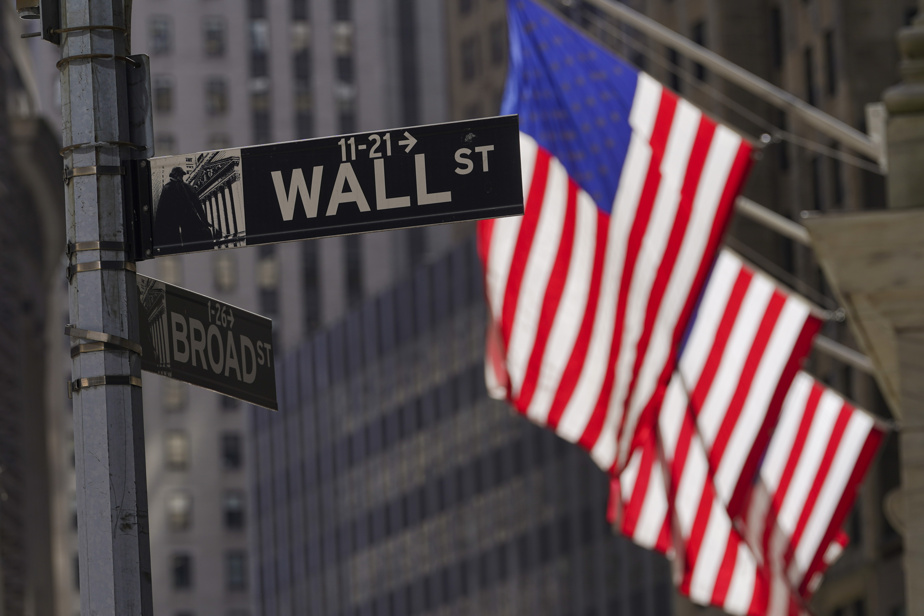(New York) The New York Stock Exchange ended in the red on Friday, posting a weekly loss for the first time in five weeks for the S&P 500 and eight weeks for the NASDAQ.
Cooled by the strict attitude of central banks towards inflation, the Dow Jones index, down all week, lost 0.65% on Friday to 33,727.43 points. The tech-heavy NASDAQ fell 1.01% to 13,492.52 points and the S&P 500 fell 0.77% to 4348.33 points.
Over the week, the three indices lost some 2%.
“It’s the ghost of interest rate hikes and the strict message from central banks” that depressed the market, summed up Peter Cardillo of Spartan Capital while putting the decline in the indices into perspective.
“The tone of the central banks is the excuse for the decline, but the fact is that the market has risen sharply in the last three months, leading to profit taking,” added the analyst interviewed by AFP.
The week was marked by statements to Congress from Jerome Powell, Chairman of the US central bank (Fed), warning that more rate hikes are expected this year to curb inflation, which has somewhat cooled investors .
Concerns also came from Europe where several central banks have tightened the screws, in particular the Bank of England which surprised the markets by raising rates by half a percentage point to counter the most tenacious inflation of the G7 countries (8.7% over one year).
“There has been constant concern about a potential recession in the United States which has been just around the corner for 18 months. But there seems to be more to fear in Europe,” summed up Art Hogan of B. Riley Wealth Management.
Several PMI activity indices published on Friday weakened markedly in June, whether in the United Kingdom, France, the euro zone and even Japan.
These data “indicate that Europe is falling into a deep recession that could spread to other countries and lead to negative economic growth in the United States in the last quarter of this year”, said Jose Torres, economist for Interactive brokers. “Equity markets appeared to price in those fears today, but with additional possible downside risk,” he added.
In the bond market, fears of recession drove down yields, but did not benefit equities. Those on 10-year Treasury bonds eased to 3.73% against 3.79% the day before.
The euro fell against the dollar as oil prices fell further as investors feared for demand.
On the stock side, Ford lost 1.20%, the wall street journal having spoken of a new wave of layoffs and massive cost-cutting at the automaker.
Used-car seller Carmax jumped 10.07% to $86.21, a nine-month high, after better-than-expected first-quarter results. Profit and turnover fell, but less than expected.
Electric vehicle makers Tesla and Rivian lost 3.03% and 4.38% respectively.
Space tourism company Virgin Galactic plunged 18.42% to $4.34 as investors worried about the California-based company’s desire to raise more funds by issuing shares, which will dilute the value of shares. existing shares.
Starbucks skimmed 2.49%. One of the coffee chain’s employee unions is planning a strike action next week in more than 150 stores.
The Toronto Stock Exchange
The Toronto Stock Exchange closed lower on Friday as crude oil prices remained below US$70 a barrel and losses in the base metals and battery metals sectors weighed on the market.
The Toronto floor’s S&P/TSX Composite Index lost 162.67 points to end the session with 19,418.23 points.
Allan Small, senior investment advisor at iA Private Wealth Management, observed that the tone of the markets had changed earlier this month after U.S. Federal Reserve Chairman Jerome Powell said two other interest rate hikes would take place by the end of the year south of the border.
“It really took the markets from a fairly positive trend to an obviously negative trend, and it feels like the first negative week for many, especially on the NASDAQ side. So I think what you’re seeing is markets starting to price in maybe another 50 basis points of interest rate hikes,” he said.
“Right now the markets are being held back by this threat of an upcoming interest rate hike. »
In his view, this does not bode well for the TSX in particular, which is heavily exposed to commodities.
“The fear for the TSX is very much in energy, in commodities, in materials,” Small said.
“If interest rates continue to rise, predictions or calls for a further downturn in the economy could materialize. We could continue to see a slowdown and maybe even a mild recession if central banks keep doing what they are doing. So I think it’s obviously negative for commodities. »
Mr. Small pointed out that the information technology sector is also one to watch, particularly in the context of rising interest rates.
Tech stocks fueled the market rally in the first half of the year, he pointed out, but have fallen in recent days.
“If you surprise the market, and I think the Fed did […] taking a hawkish tone and saying they definitely see a few more interest rate hikes coming by the end of the year, that’s a big negative for tech,” Small said. .
In the currency market, the Canadian dollar traded at an average rate of 75.76 cents US, down from 75.99 cents US on Thursday.
On the New York Commodities Exchange, crude oil prices fell 35 cents to US$69.16 a barrel, while natural gas fell 14 cents to US$2.84 per million BTU.
The price of gold rose US$5.90 to US$1929.60 an ounce and that of copper fell US9 cents to US$3.80 a pound.
The Canadian Press
